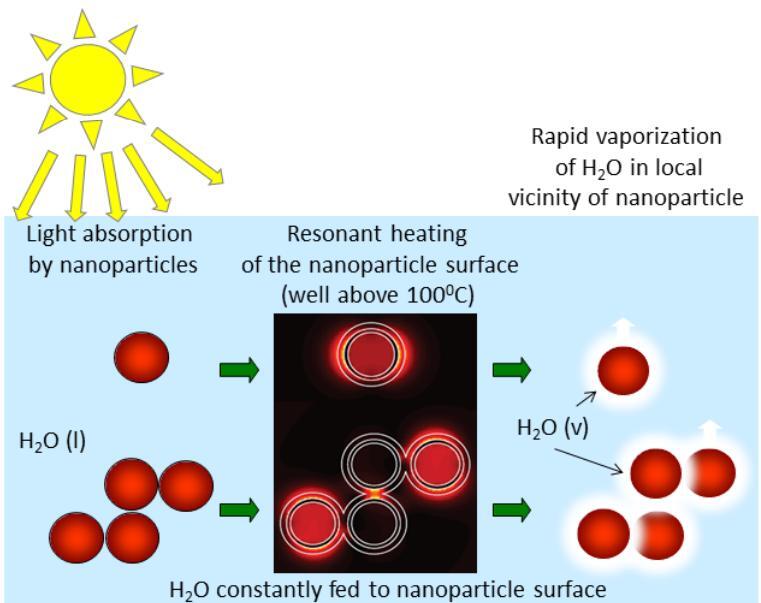A team of researchers at Rice University has developed a new technology that uses light-absorbing nanoparticles to convert solar energy directly into steam. Even though it is already significantly more efficient than solar panels at producing electricity, the technology will likely find its first applications in low-cost sanitation, water purification and human waste treatment for the developing world.
Approximately 90 percent of the world's electricity is produced from steam turbines. Most industrial steam is produced in large, expensive boilers, but because of its very small footprint and high efficiency, this new development promises to make steam economically viable on a much smaller scale. Sterilizing medical waste and surgical instruments, preparing food and purifying water could soon become within reach of a large chunk of the developing world, that doesn't have access to the electrical grid.
The Rice technology relies on light-absorbing nanoparticles. When they are submerged and then illuminated, these particles can very quickly reach temperatures well above the boiling point of water. At this stage, they quickly dissipate heat through their very small surface area, which almost instantly results in 150°C (300°F) steam generated right at the surface of the particle. The system is so effective that it can even turn icy-cold water directly into vapor with ease.

The technology converts about 80 percent of the energy coming from the sun into steam. With the current iteration, passing the resulting steam to a turbine would generate electricity with an overall efficiency of 24 percent (compared to a solar panel's typical efficiency of around 15 percent). As the technology is further refined, the researchers say there is still room for improvement on the efficiency front.
Other potential uses could be powering hybrid air-conditioning and heating systems that run off of sunlight during the day and off of electricity at night. The system has also proved very promising in distilling water, with an experiment finding that the technology is about two and a half times more efficient than existing commercially available systems.
The project was awarded a grant from the Bill and Melinda Gates Foundation to create a small-scale system for treating human waste in areas lacking sewer systems or electricity. In the meantime, Rice engineering undergraduates have already created a solar steam-powered autoclave that can sterilize medical and dental instruments in clinics lacking electricity.
An open-access paper detailing the research efforts was published in the journal ACS Nano.
Source: Rice University
The video below illustrates the working principles behind this technology.







